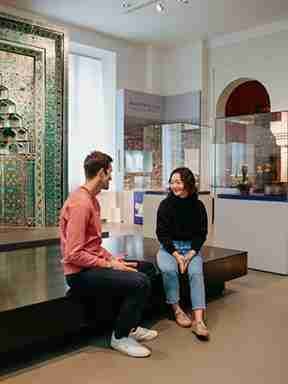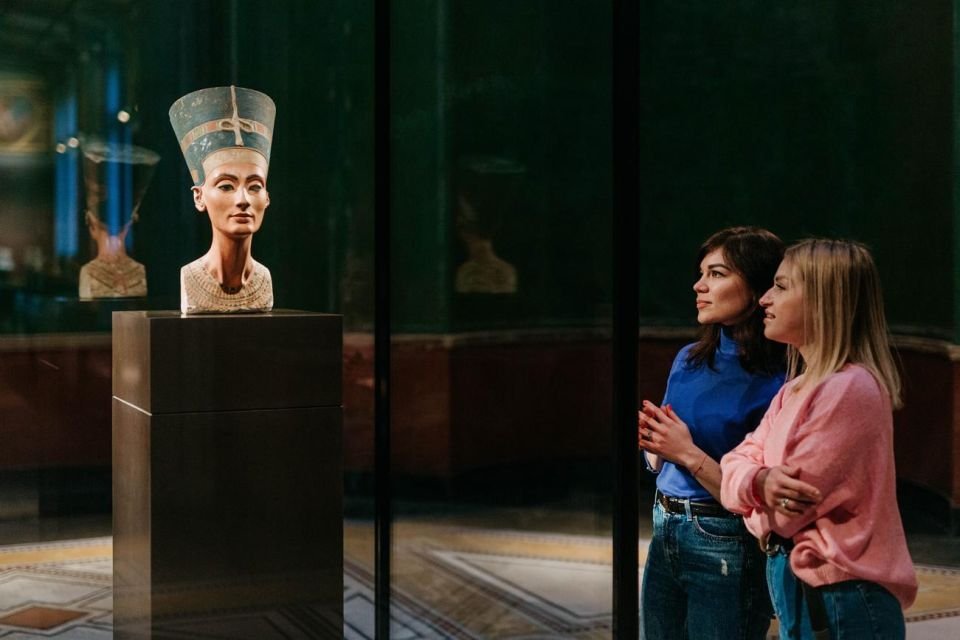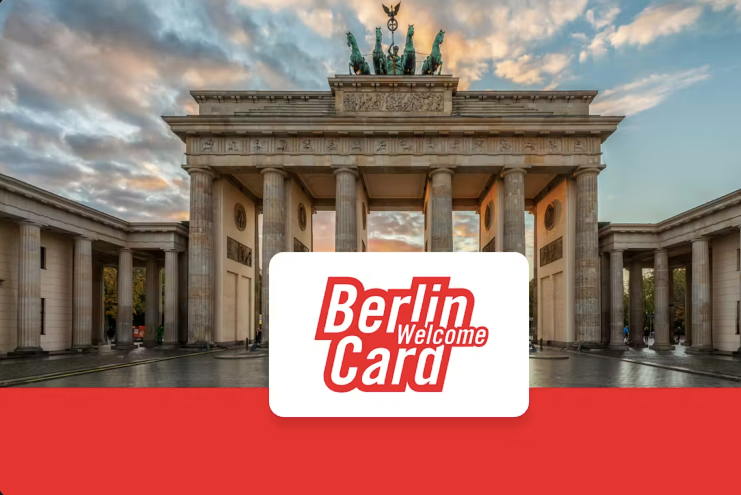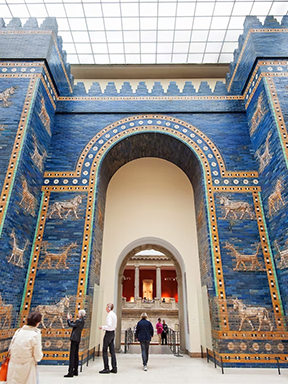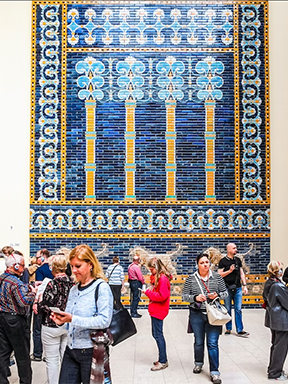PERGAMON MUSEUM BERLIN
Find here important information to plan your visit, including the historical and architectural side, collection and opening hours
Important information: The Pergamonmuseum on Museum Island Berlin is expected to be closed to visitors from October 23, 2023 until spring 2027 due to renovation work as part of the "Museum Island Master Plan". The exhibition "The Panorama" of the Pergamonmuseum will continue to be accessible during this time.
HISTORY / ARCHITECTURE
The Historical Journey of the Pergamon Museum Berlin
The Pergamon Museum is a preserved museum located on Museum Island in the capital of Germany, Berlin. It's a must-see and one of Berlin's most visited and significant archaeological museums, under the UNESCO heritage.
Pergamon (Bergama) is a district located in the İzmir province of Turkey. The main reason for the presence of the Pergamon Altar from Pergamon in Berlin is primarily attributed to the discoveries made by the German engineer Carl Humann in the Pergamon region.
Following the unveiling of Troy by the renowned merchant and archaeologist Heinrich Schliemann, a fervor for excavations erupted in the 19th century. German explorers journeyed to Pergamon, Miletus, Babylon, Uruk, Assur, and Egypt. During this period, the Ottoman Empire, the ruler of the area, granted permission for the export of significant architectural monuments, sculptures, and minor treasures to Berlin.
As the latest addition to Museum Island Berlin, it was inaugurated in 1930. The Pergamon Museum’s design, initiated by Alfred Messel in 1906, was completed by Ludwig Hoffmann after Messel's passing.
The Pergamon Museum Berlin Building's Architectural Side
In the early 1900s, Wilhelm von Bode, the director of the Kaiser-Friedrich-Museum, envisioned constructing a large three-winged museum to house artifacts unearthed during ongoing excavations. Inspired by this vision, the Bergama Museum, designed in the Neoclassical style by Alfred Messel, came to life between 1910 and 1930 in a simplified manner under the guidance of Ludwig Hoffmann. The museum was planned to encompass works of ancient architecture, post-antique German art, and art from the Middle East and Islamic cultures. Despite the challenges posed by World War I, the museum's construction continued, culminating in its grand opening in 1930.
The three-winged complex boasts a simple and archaic architectural design. The Pergamon Museum's exterior showcases grand facades, monumental entrances, and intricate detailing that evoke the splendor of ancient civilizations. Its design masterfully balances historical references with contemporary aesthetics. The facades often exhibit ornate decorations, friezes, and reliefs inspired by ancient architecture, establishing a visual connection to the treasures within.
Inside, the museum's layout is meticulously crafted to offer visitors a dynamic and immersive experience.
Overall, the Pergamon Museum's architecture stands as a testament to the significance of the artifacts it houses. Its design not only complements but also elevates the historical treasures, providing visitors with a captivating journey through time and culture as they explore the museum's exceptional architecture and unparalleled collection.
The Pergamon Museum's Collections (Permanent Exhibition)
Currently, the Pergamon Museum in Berlin houses three very important and worth-seeing collections.
Let's get to know these three collections more closely!
1. Antikensammlung (Collection of Classical Antiquities)
This collection includes collections of ancient Greek and Roman architectural monuments. It is exhibited in three separate museum buildings on Museum Island (Museumsinsel) in Berlin. The most impressive work of ancient Greek art is the Pergamon Altar, an example of Hellenistic art. In Roman architecture, it is the Gate of Miletus.
*The Pergamon Altar will be closed until the year 2025.
2. Vorderasiatisches Museum (Museum of the Ancient Near East)
In this section of the Pergamon Museum, you can find artifacts from the regions of Mesopotamia, Syria, and Anatolia. These remarkable pieces encompass nearly 270,000 objects from Babil, Assur, Uruk, and Sam'al. Architecturally significant, you can visit the massive architectural reconstructions of the Ishtar Gate and Babylon's Processional Way here. You should definitely explore the cuneiform writings on clay tablets, which are the oldest known written documents in history.
3. Museum für Islamische Kunst (Museum for Islamic Art)
This section contains very important and unique artifacts from the Islamic world. These artifacts encompass decorative arts and archaeological pieces.
The most impressive points are the intricately decorated stone facade of the caliph's Mshatta palace (Jordan) and the famous Aleppo Room with its brightly painted wooden panels (Syria).
Highlights of the collection
- Pergamon Altar
- Market Gate of Miletus
- Ishtar Gate with the Processional Way of Babylon
- Mshatta Facade
Pergamon Museum Berlin Tickets & Tours
Visit the most famous part of the Berlin Museum Island. See the main attractions: the colorful Ishtar Gate and the Processional way from Babylon. Gaze in wonder at the richly decorated stone façade of the Mshatta palace
€ 14.00
Discover Museum Island in Berlin with this ticket that is valid for one day in all houses of the Museum Island (Altes Museum, Neues Museum, Bodemuseum, Das Panorama, Alte Nationalgalerie).
€ 24.00
Explore Berlin with the Berlin WelcomeCard with exclusive access to the 5 museums on Berlin’s Museum Island and free transport in AB and ABC zones.
€ 59.50
Take a trip back in time with the Pergamon's huge collection of art, architecture and artifacts from the ancient world. See the Ishtar Gate, one of the original Seven Wonders of the Ancient World, among other treasures of antiquity. Pick up a free audio guide with your Pergamon Museum tickets to help make sense of the fascinating pieces of human history
€ 12.00
See the famous head of Tiye (one of the most influential women in ancient Egypt) and the bust of Nefertiti. Walk around ancient archaeological finds from the Stone, Ice, Iron and Bronze ages - a guaranteed history lesson to remember. Learn about ancient cultures, their daily lives and the art and tools that shaped their worlds, all in the middle of Berlin!
€ 25.96

Plan Your Visit to the Pergamon Museum Berlin
Location
James-Simon-Galerie, Bodestraße, 10178 Berlin.
(The entrances take place from here.)
Getting to Pergamon Museum Berlin
- S-Bahn: Friedrichstraße, Hackescher Markt
- U-Bahn: Museumsinsel (Museumsinsel) (U5)
- Tram: Am Kupfergraben, Hackescher Markt
- Bus: Staatsoper, Lustgarten, Friedrichstraße
Opening Hours
Starting from October 23, 2023, the Pergamon Museum on Berlin's Museum Island will be closed for visits until the spring of 2027 due to necessary renovation works as part of the "Museum Island Master Plan”. Therefore, the working hours are as follows from July 1st (Saturday) to October 22nd, 2023 (Sunday). >> More Information
* Everyday open from 09:00 am - 07: pm (Mondays closed)
* The Panorama of the Pergamon Museum will remain open during the closure of the Pergamon Museum.
* Working hours may change on special occasions.
Things to Know Before Visiting the Pergamon Museum Berlin
Frequently Asked Questions About Pergamon Museum in Berlin
The Asisi Panorama at the Pergamon Museum offers an easily understandable and monumental concept with a 360° view of an ancient city in Asia Minor.
This may vary depending on your interest. However, it is recommended to plan for a minimum of 2 hours. >More information about visit duration
Pergamon (Bergama) is a district in the Izmir province of Turkey. The main reason for the presence of the Bergama Zeus Altar in Berlin is primarily due to the discoveries made by the German engineer Carl Humann in the Bergama region. The Zeus Altar is one of the most admired works of the Hellenistic era. The artifact has been exhibited in Berlin since 1910.
Monumental architectural endeavors, including the Pergamon Altar, served as a crucial means for the Attalids to assert their legitimacy as rightful successors of Alexander's empire and, consequently, the heritage of Classical Greece. The Altar stands prominently in the foreground, while a model of the acropolis at Pergamon is displayed.
Starting from October 23, 2023, the Pergamon Museum on Berlin's Museum Island will be closed for visits until the spring of 2027 due to necessary renovation works as part of the "Museum Island Master Plan."

